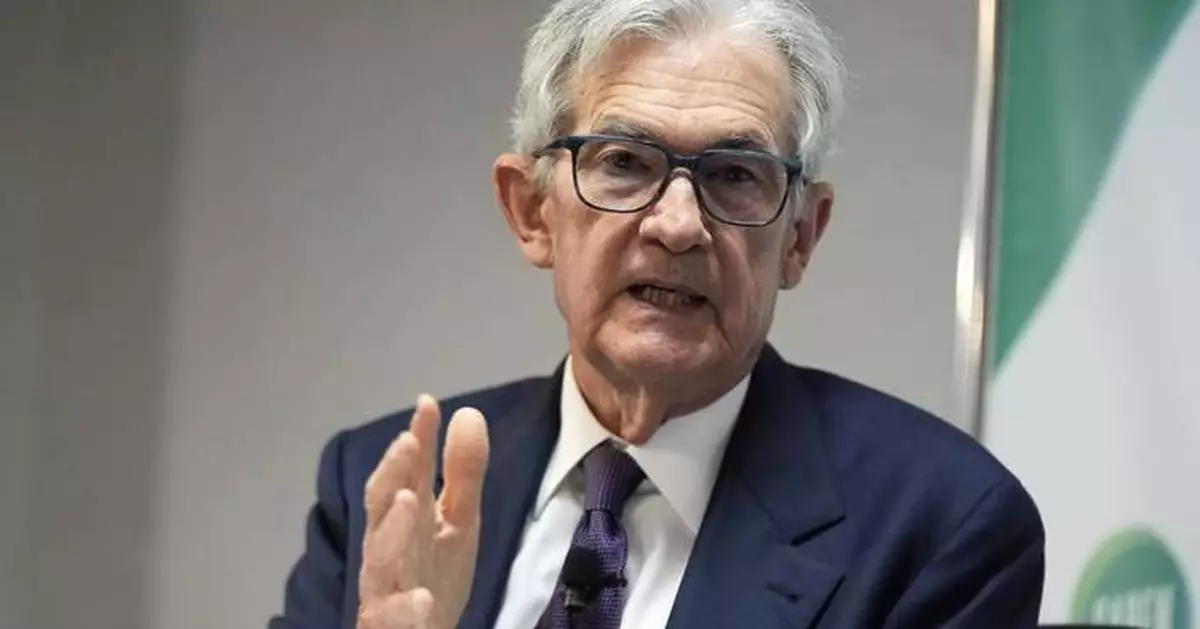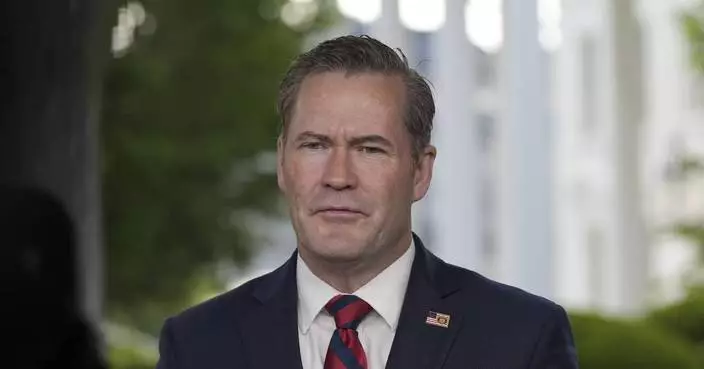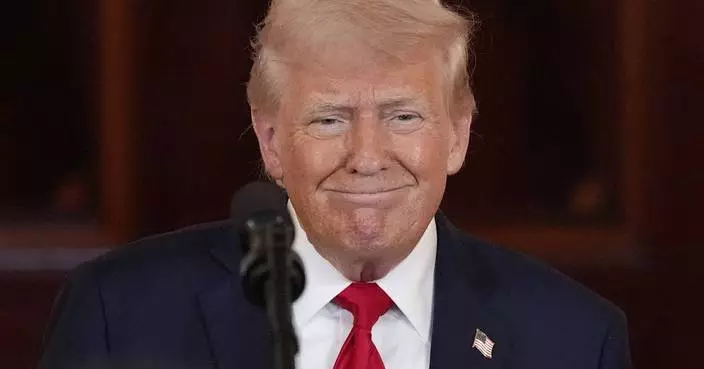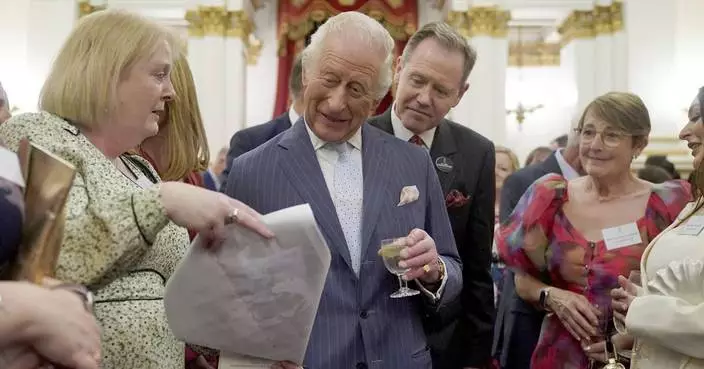WASHINGTON (AP) — The Federal Reserve can stay patient and wait to see how tariffs and other economic policies of the Trump administration play out before making any changes to interest rates, Chair Jerome Powell said Wednesday.
“As that great Chicagoan Ferris Bueller once noted, ‘Life moves pretty fast,'" Powell said in a speech to the Economic Club of Chicago. "For the time being, we are well positioned to wait for greater clarity” on the impact of policy changes in areas such as immigration, taxation, regulation, and tariffs, Powell said.
Click to Gallery
Chair of the Board of Governors of the Federal Reserve System Jerome Powell speaks during an event hosted by the Economic Club of Chicago, Wednesday, April 16, 2025, in Chicago. (AP Photo/Erin Hooley)
Chair of the Board of Governors of the Federal Reserve System Jerome Powell speaks during an event hosted by the Economic Club of Chicago, Wednesday, April 16, 2025, in Chicago. (AP Photo/Erin Hooley)
Chair of the Board of Governors of the Federal Reserve System Jerome Powell speaks during an event hosted by the Economic Club of Chicago, Wednesday, April 16, 2025, in Chicago. (AP Photo/Erin Hooley)
Chair of the Board of Governors of the Federal Reserve System Jerome Powell speaks during an event hosted by the Economic Club of Chicago, Wednesday, April 16, 2025, in Chicago. (AP Photo/Erin Hooley)
Chair of the Board of Governors of the Federal Reserve System Jerome Powell takes the stage to speak during an event hosted by the Economic Club of Chicago, Wednesday, April 16, 2025, in Chicago. (AP Photo/Erin Hooley)
Federal Reserve Chairman Jerome Powell speaks at the SABEW Annual Conference Society for Advancing Business Editing and Writing Annual Conference in Arlington, Va., Friday, April 4, 2025. (AP Photo/Manuel Balce Ceneta)
The sharp volatility in financial markets since President Donald Trump announced sweeping tariffs April 2, only to put most of them on hold a week later, has led to speculation about whether the Fed would soon cut its key interest rate or take other steps to calm investors. Yet the Fed is unlikely to intervene unless there is a breakdown in the market for Treasury securities or other malfunctions, economists say.
Stocks fell further after Powell's remarks. The broad S&P 500 index dropped more than 2% in afternoon trading.
In his prepared remarks, Powell reiterated that the Trump administration's tariffs are “significantly larger than anticipated."
“The same is likely to be true of the economic effects, which will include higher inflation and slower growth,” he said.
Powell also said that the Fed could face threats to both of the mandates it's been given by Congress: To achieve maximum employment and maintain stable prices. Should both inflation and unemployment rise, that would be a “challenging scenario," he said, because the Fed would essentially have to choose whether to keep interest rates high to fight inflation, or cut them to spur growth and hiring.
“Our tool only does one of those two things at the same time,” he said in a question-and-answer session.
Powell and many Fed officials have signaled previously that they are more concerned about tariffs pushing inflation higher than their potential hit to growth. That would mean that even if the economy weakened, the Fed might keep rates elevated to combat inflation.
Powell said the inflation from tariffs will likely be temporary, but “could also be more persistent,” echoing a concern expressed by a majority of the Fed's 19-member interest rate-setting committee in the minutes of their meeting last month.
Yet some splits among the Fed's interest rate-setting committee have emerged. On Monday, Fed governor Christopher Waller said that he expects the impact of even a large increase in tariffs to be temporary, even if they are left in place for several years. At the same time, he also expects such large duties would weigh on the economy and even threaten a recession.
Should the economy slow sharply, even if inflation remained elevated, Waller said he would support cutting interest rates “sooner, and to a greater extent than I had previously thought."
But other Fed officials, including Neel Kashkari, president of the Fed's Minneapolis branch, have said they are more focused on fighting the effects of higher tariffs on inflation, suggesting they are less likely to support rate cuts anytime soon.
For now, most recent reports suggest the economy is in solid shape. Hiring has been solid and inflation cooled in March. Yet measures of consumer and business confidence have plunged, raising concerns among economists that spending and business investment could weaken.
Powell said he shared those concerns. He said that the increase in tariffs was so large and there is so much uncertainty surrounding the administration's next moves that it could cause companies to become more cautious about spending.
“These are very fundamental changes in long held ... policies in the United States,” he said. “The Smoot-Hawley tariffs were actually not this large and they were 95 years ago. So there isn’t a modern experience of how to think about this.” The Smoot-Hawley tariff in 1930 has been blamed for worsening the Great Depression.
If the uncertainty persists, Powell said, "that would weigh on ... investment, just in general.”
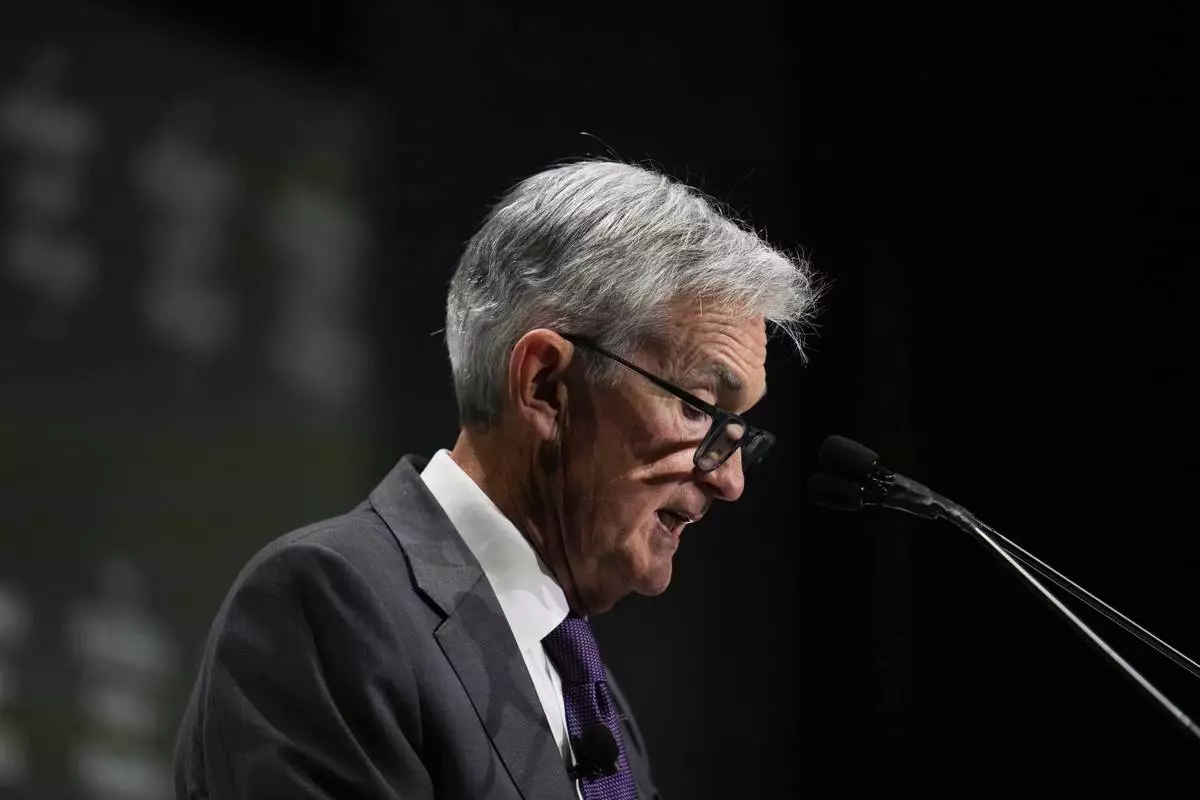
Chair of the Board of Governors of the Federal Reserve System Jerome Powell speaks during an event hosted by the Economic Club of Chicago, Wednesday, April 16, 2025, in Chicago. (AP Photo/Erin Hooley)
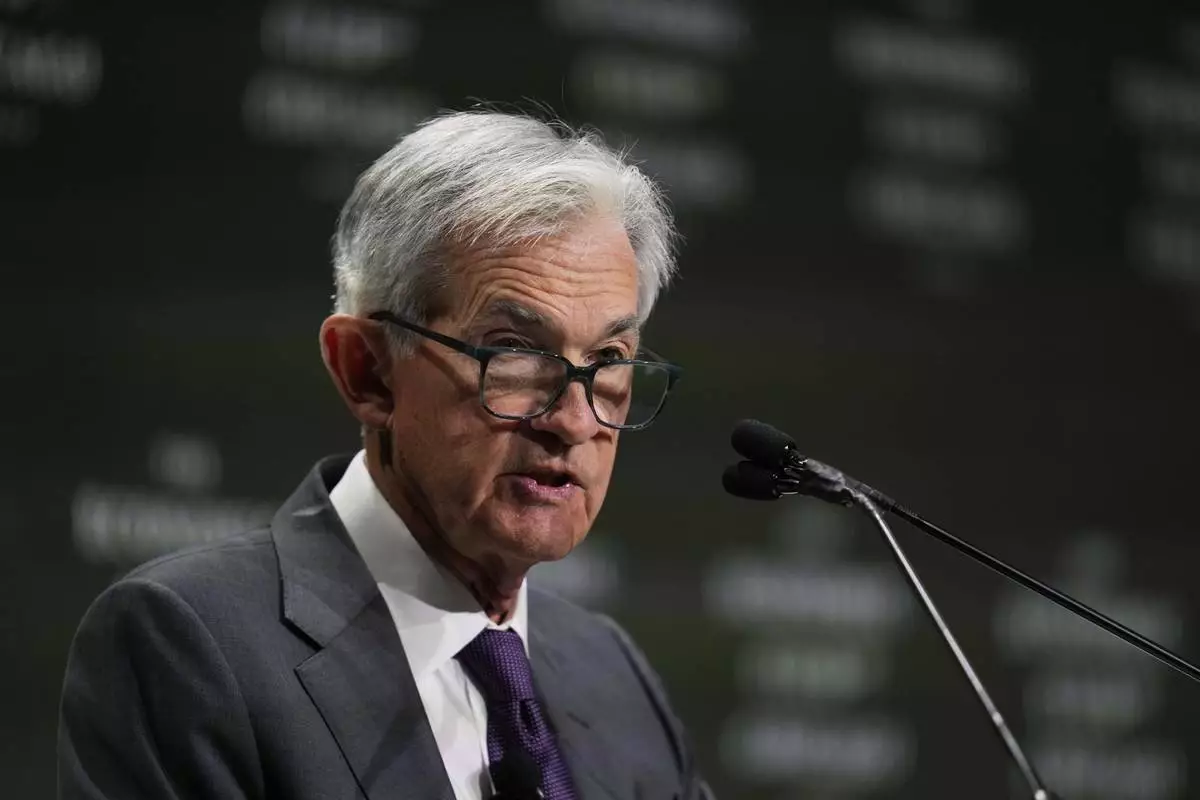
Chair of the Board of Governors of the Federal Reserve System Jerome Powell speaks during an event hosted by the Economic Club of Chicago, Wednesday, April 16, 2025, in Chicago. (AP Photo/Erin Hooley)
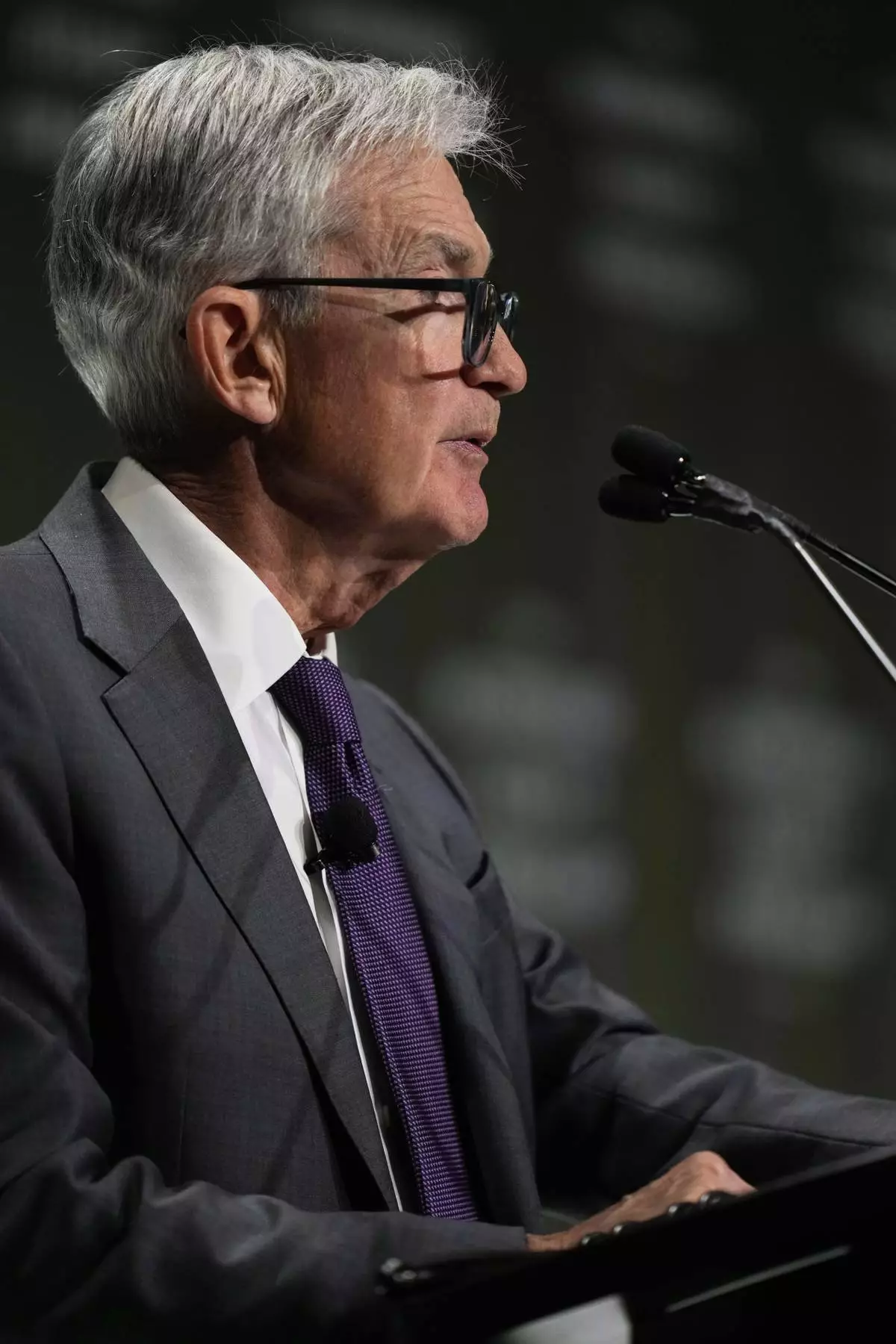
Chair of the Board of Governors of the Federal Reserve System Jerome Powell speaks during an event hosted by the Economic Club of Chicago, Wednesday, April 16, 2025, in Chicago. (AP Photo/Erin Hooley)
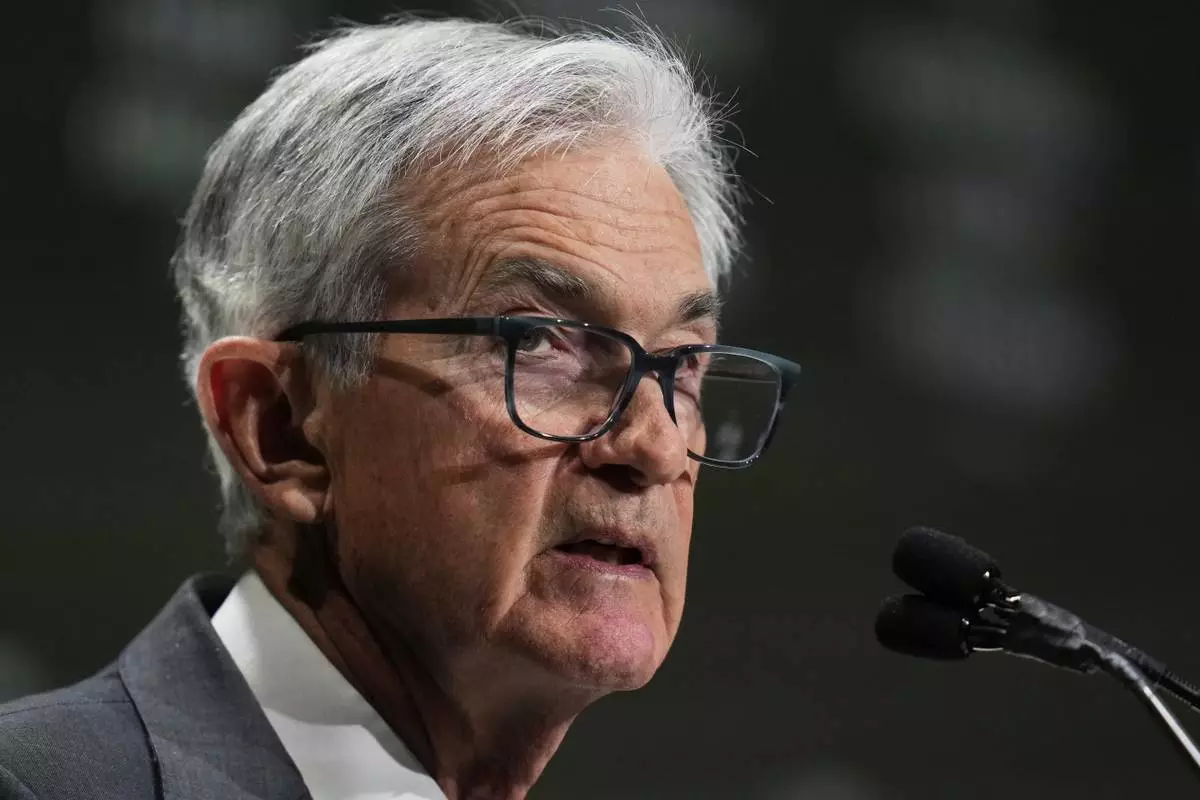
Chair of the Board of Governors of the Federal Reserve System Jerome Powell speaks during an event hosted by the Economic Club of Chicago, Wednesday, April 16, 2025, in Chicago. (AP Photo/Erin Hooley)
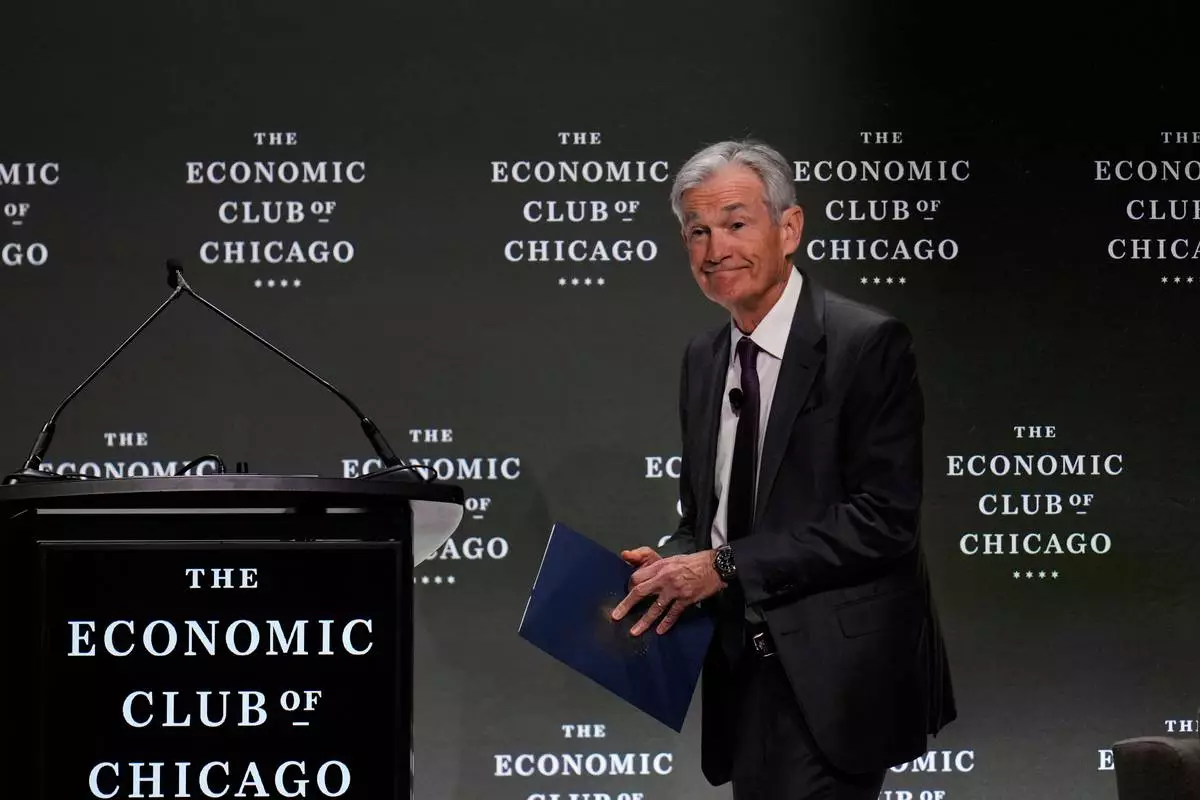
Chair of the Board of Governors of the Federal Reserve System Jerome Powell takes the stage to speak during an event hosted by the Economic Club of Chicago, Wednesday, April 16, 2025, in Chicago. (AP Photo/Erin Hooley)
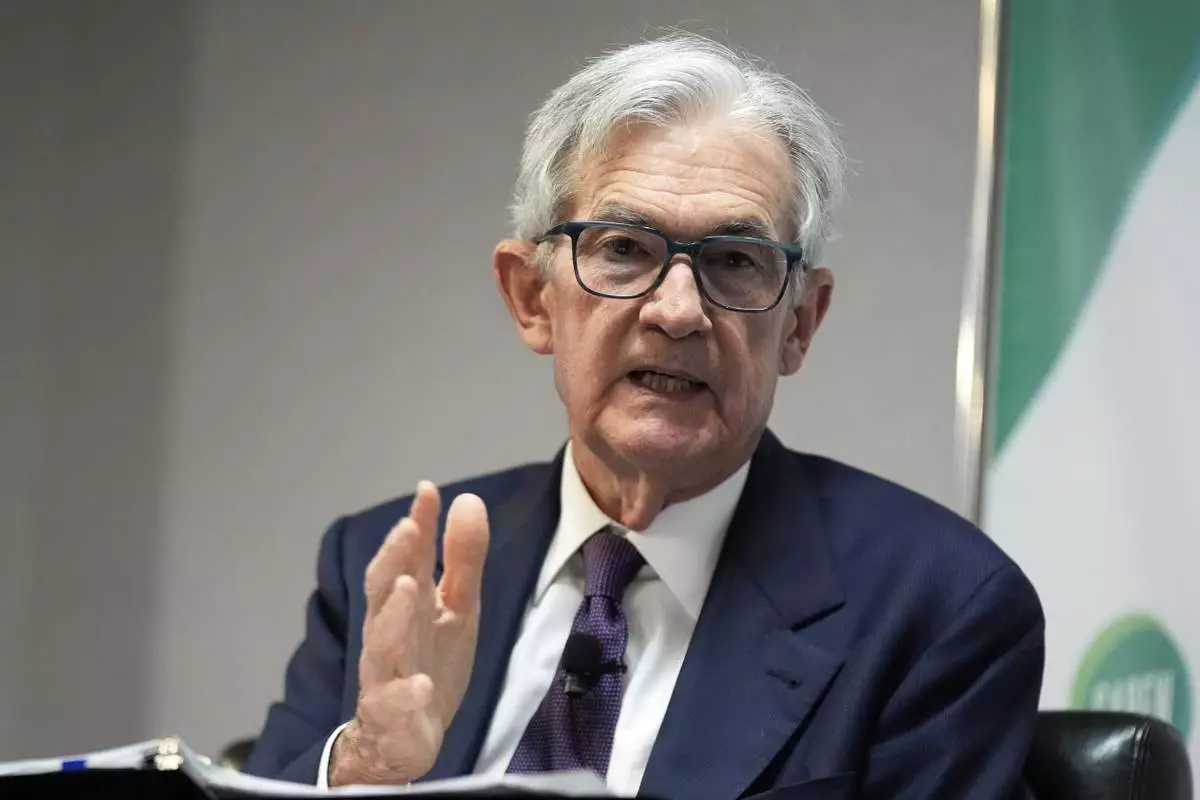
Federal Reserve Chairman Jerome Powell speaks at the SABEW Annual Conference Society for Advancing Business Editing and Writing Annual Conference in Arlington, Va., Friday, April 4, 2025. (AP Photo/Manuel Balce Ceneta)
President Donald Trump’s administration released a lengthy review of transgender health care on Thursday that advocates for a greater reliance on behavioral therapy rather than broad gender-affirming medical care for youths with gender dysphoria.
The 409-page Health and Human Services report questions standards for the treatment of transgender youth issued by the World Professional Association for Transgender Health and is likely to be used to bolster the government’s abrupt shift in how to care for a subset of the population that has become a political lightning rod.
Major medical groups and those who treat transgender young people sharply criticized the new report as inaccurate.
This “best practices” report is in response to an executive order Trump issued days into his second term that says the federal government must not support gender transitions for anyone under age 19.
“Our duty is to protect our nation’s children — not expose them to unproven and irreversible medical interventions,” National Institutes of Health Director Dr. Jay Bhattacharya said in a statement. “We must follow the gold standard of science, not activist agendas.”
The report questions the ethics of medical interventions for transgender young people, suggesting that adolescents are too young to give consent to life-changing treatments that could result in future infertility. It also cites and echoes a report in England that reinforced a decision by its public health services to stop prescribing puberty blockers outside of research settings.
The report accuses transgender care specialists of disregarding psychotherapy that might challenge preconceptions, partly because of a “mischaracterization of such approaches as ‘conversion therapy,’” which about half the states have banned for minors.
The American Academy of Child & Adolescent Psychiatry has said evidence shows conversion therapies inflict harm on young people, including elevated rates of suicidal thoughts.
HHS said its report does not address treatment for adults, is not clinical guidance and does not make any policy recommendations. However, it also says the review “is intended for policymakers, clinicians, therapists, medical organizations, and importantly, patients and their families,” and it declares that medical professionals involved in transgender care have failed their young patients.
The report could create fear for families seeking care and for medical providers, said Shannon Minter, the legal director at the National Center for Lesbian Rights. “It’s very chilling to see the federal government injecting politics and ideology into medical science,” Minter said.
“It’s Orwellian. It is designed to confuse and disorient,” Minter added.
Child and adolescent psychiatrist Dr. Scott Leibowitz, a co-author of the influential WPATH standards for youth, said the new report “legitimizes the harmful idea that providers should approach young people with the notion that alignment between sex and gender is preferred, instead of approaching the treatment frame in a neutral manner.”
While Health Secretary Robert F. Kennedy Jr. has repeatedly pledged to practice “radical transparency,” his department did not release any information about who authored the study. The administration says the new report will go through a peer-review process and will only say who contributed to the report after “in order to help maintain the integrity of this process.”
The report contradicts American Medical Association guidance, which urges states not to ban gender-affirming care for minors, saying that “empirical evidence has demonstrated that trans and non-binary gender identities are normal variations of human identity and expression.”
It also was prepared without input from the American Academy of Pediatrics, according to its president, Dr. Susan Kressly.
“This report misrepresents the current medical consensus and fails to reflect the realities of pediatric care,” Kressly said. She said the AAP was not consulted “yet our policy and intentions behind our recommendations were cited throughout in inaccurate and misleading ways.”
Dr. Jack Drescher, a New York psychiatrist and psychoanalyst who works on sexual orientation and gender identity issues, said the report is one-sided and “magnifies the risks of treatments while minimizing benefits.”
The Trump administration’s report says “many” U.S. adolescents who are transgender or are questioning their gender identity have received surgeries or medications. In fact, such treatments remain rare as a portion of the population. Fewer than 1 in 1,000 adolescents in the U.S. received gender-affirming medication — puberty blockers or hormones — according to a five-year study of those on commercial insurance released this year. About 1,200 patients underwent gender-affirming surgeries in one recent year, according to another study.
Gender-affirming care for transgender youth under standards widely used in the U.S. includes developing a plan with medical experts and family members that includes supportive talk therapy and can — but does not always — involve puberty blockers or hormone treatment. Many U.S. adolescents with gender dysphoria may decide not to proceed with medications or surgeries.
Jamie Bruesehoff, a New Jersey mom, said her 18-year-old daughter, who was assigned male at birth, identified with girls as soon as she could talk. She began using a female name and pronouns at 8 and received puberty blockers at 11 before eventually beginning estrogen therapy.
“She is thriving by every definition of the word,” said Bruesehoff, who wrote a book on parenting gender-diverse children. “All of that is because she had access to this support from her family and community and access to evidence-based gender-affirming health care when it was appropriate.”
A judge has blocked key parts of Trump’s order, which includes denying research and educational grants for medical schools, hospitals and other institutions that provide gender-affirming care to people 18 or younger. Several hospitals around the country ceased providing care. The White House said Monday that since Trump took office, HHS has eliminated 215 grants totaling $477 million for research or education on gender-affirming treatment.
Most Republican-controlled states have also adopted bans or restrictions on gender-affirming care. A U.S. Supreme Court ruling is pending after justices heard arguments in December in a case about whether states can enforce such laws.
The Jan. 28 executive order is among several administration policies aimed at denying the existence of transgender people. Trump also has ordered the government to identify people as either male or female rather than accept a concept of gender in which people fall along a spectrum, remove transgender service members from the military, and bar transgender women and girls from sports competitions that align with their gender. This month, HHS issued guidance to protect whistleblowers who report doctors or hospitals providing gender-affirming care. Judges are blocking enforcement of several of the policies.
This latest HHS report, which Trump called for while campaigning last year, represents a reversal in federal policy. The U.S. Substance Abuse and Mental Health Services Administration, which is part of HHS, found that no research had determined that behavioral health interventions could change someone’s gender identity or sexual orientation. The 2023 update to the 2015 finding is no longer on the agency’s website.
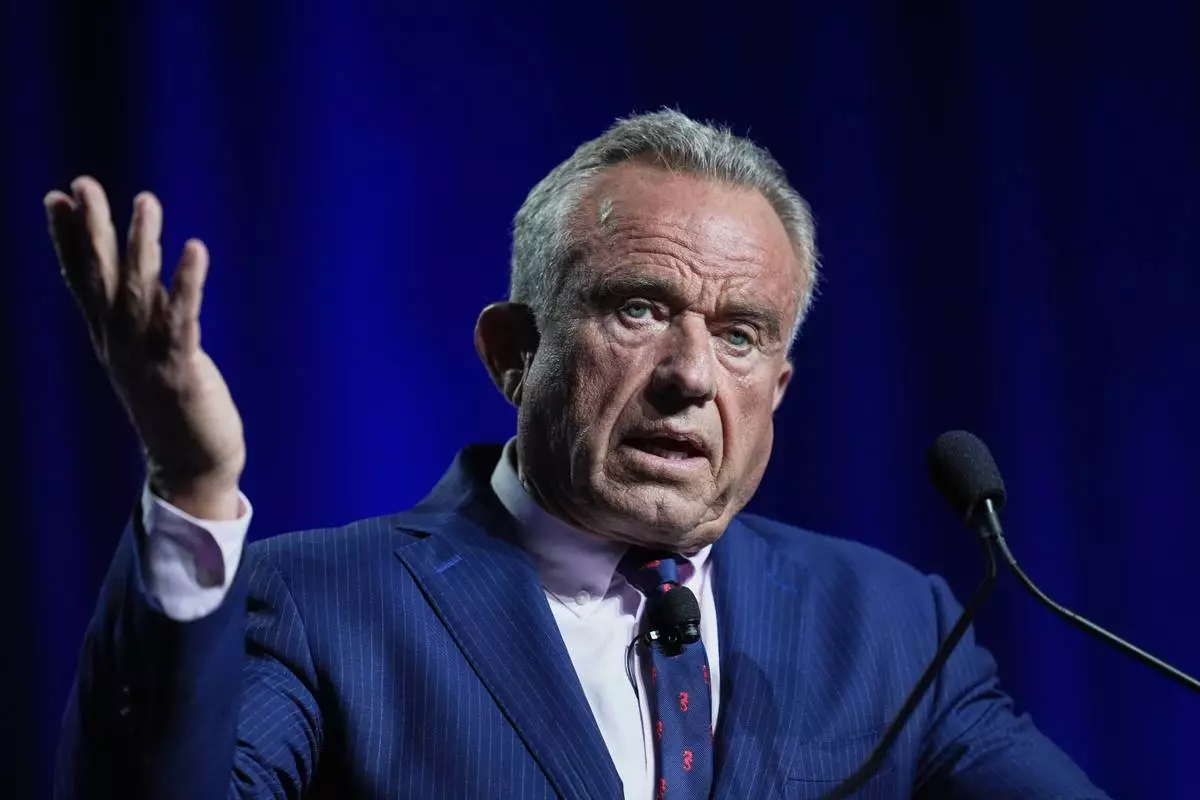
FILE - Health and Human Services Secretary Robert F. Kennedy Jr. speaks at the Rx and Illicit drug Summit, April 24, 2025, in Nashville, Tenn. (AP Photo/George Walker IV, File)
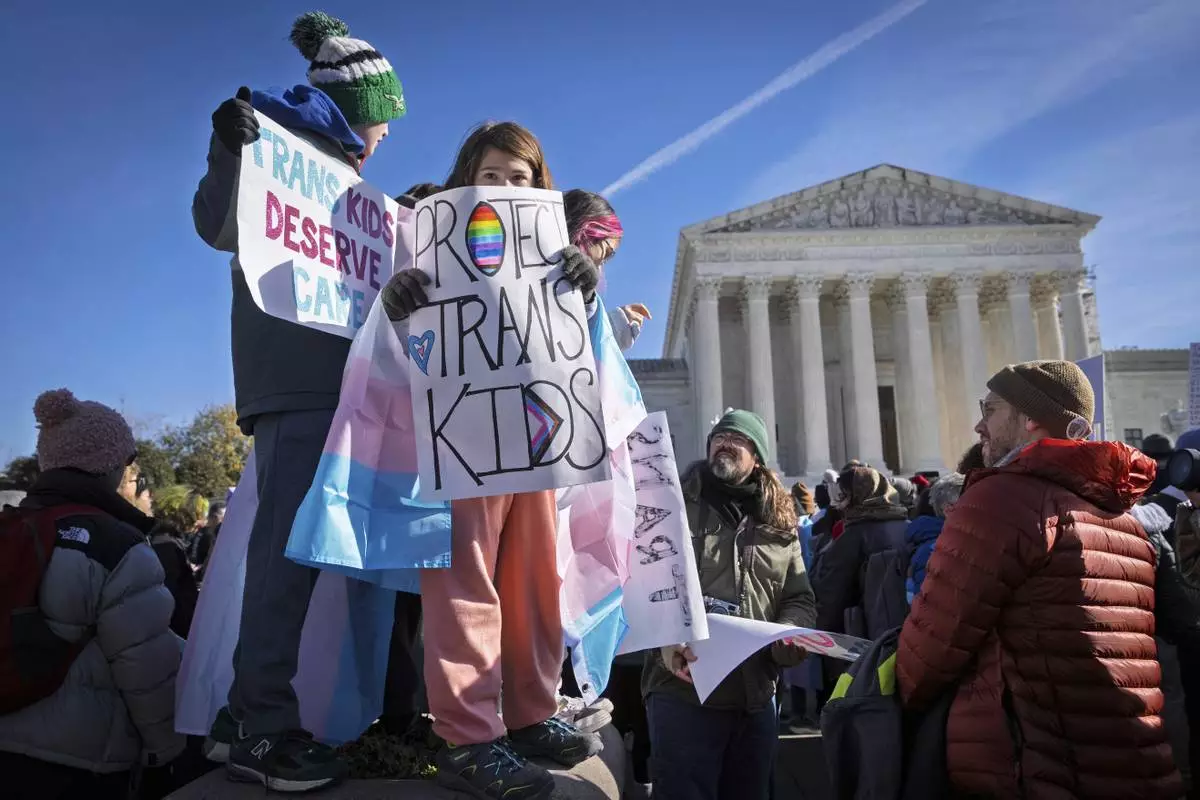
FILE - Children hold signs and transgender pride flags as supporters of transgender rights rally by the Supreme Court, Dec. 4, 2024, in Washington. (AP Photo/Jacquelyn Martin, File)
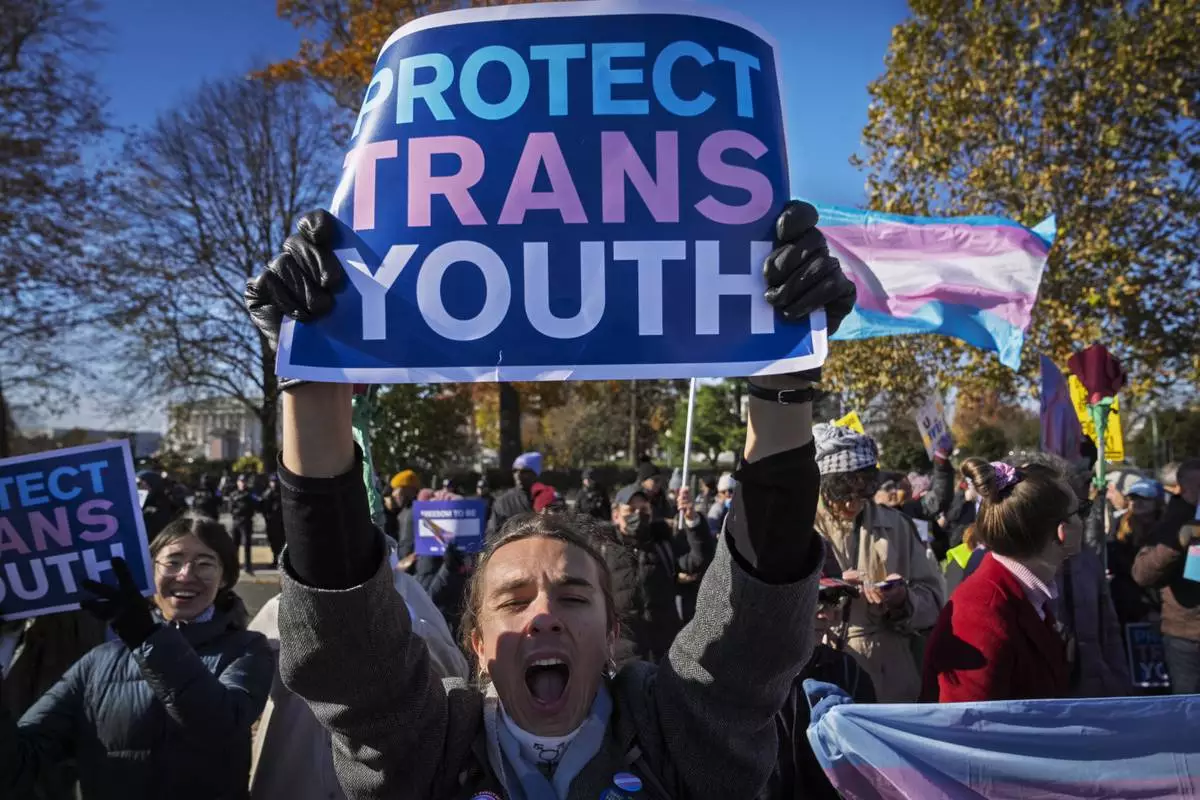
File - Supporters of transgender rights rally by the Supreme Court, Dec. 4, 2024, in Washington. (AP Photo/Jacquelyn Martin, File)
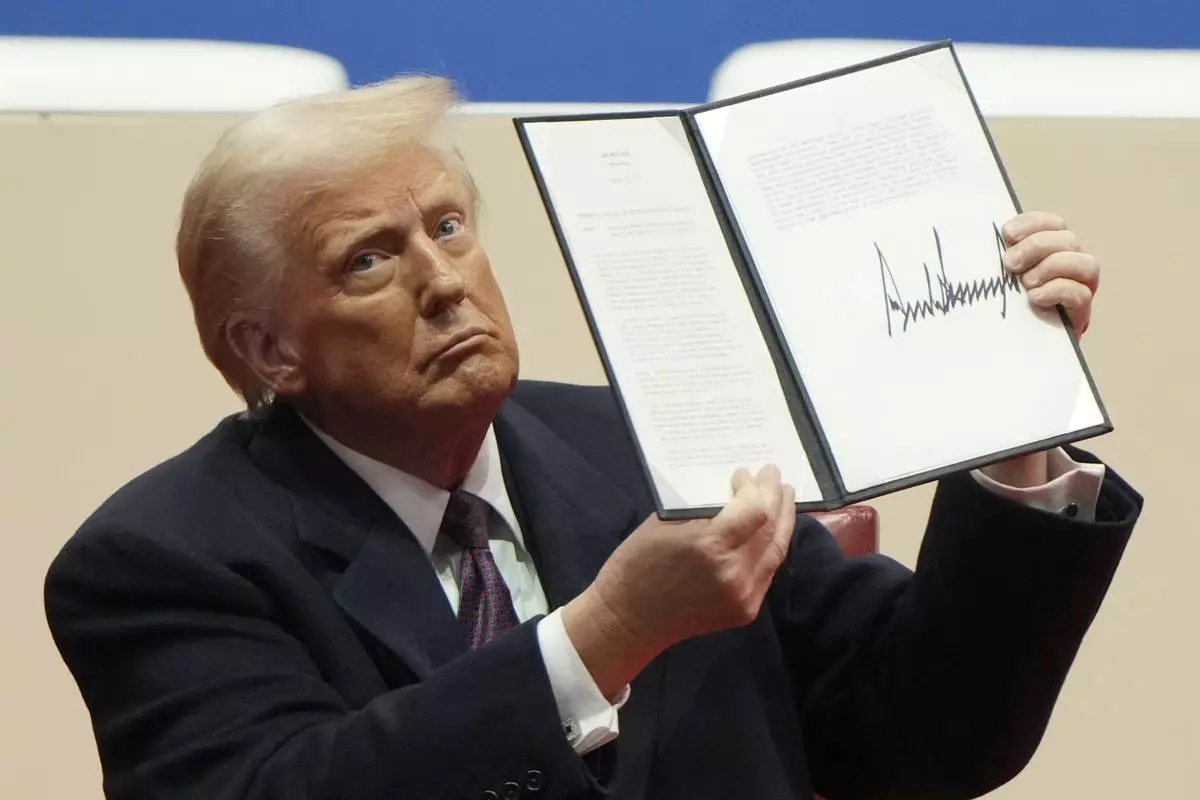
FILE - President Donald Trump holds up an executive order after signing it at an indoor Presidential Inauguration parade event in Washington, Jan. 20, 2025. (AP Photo/Matt Rourke, File)








